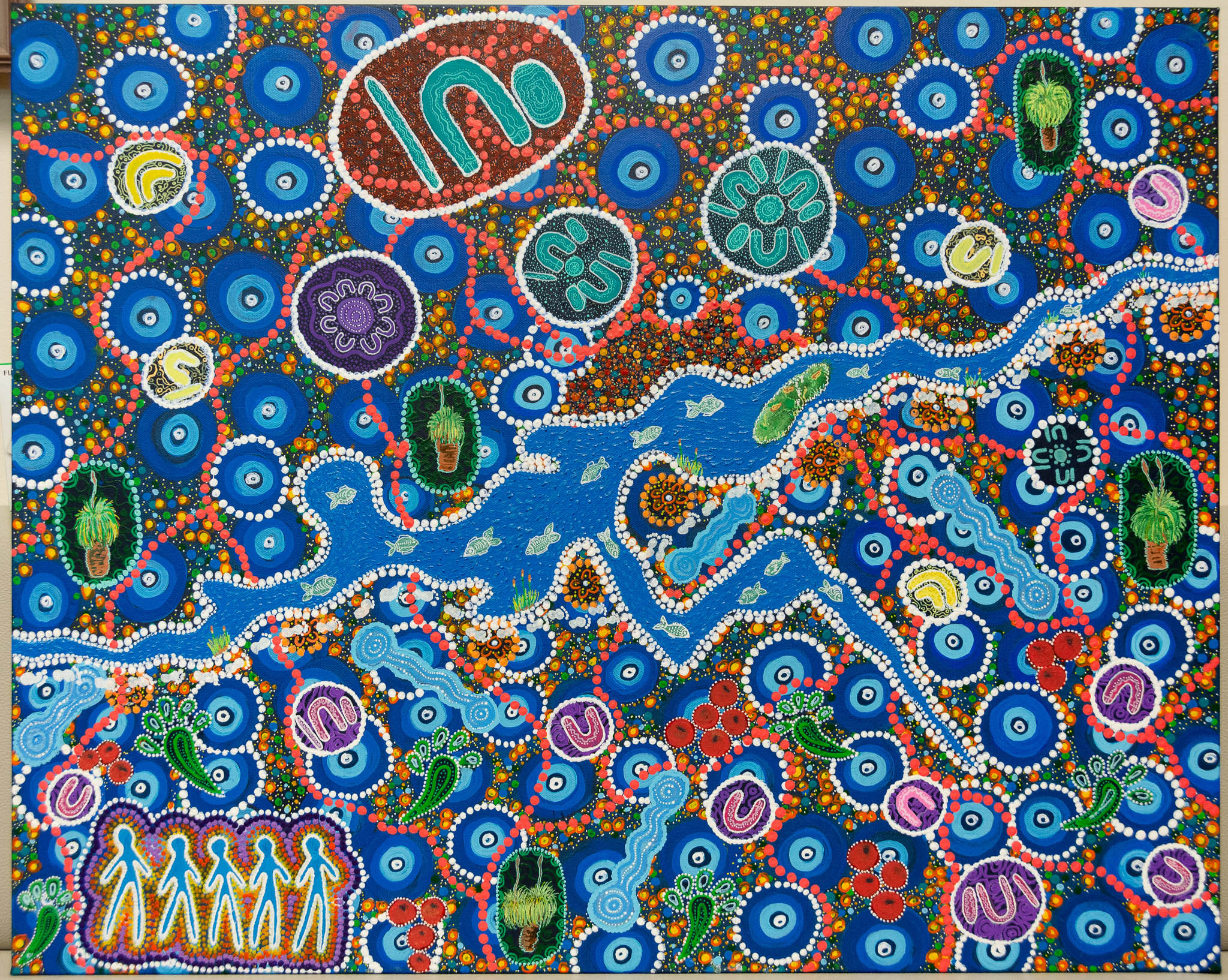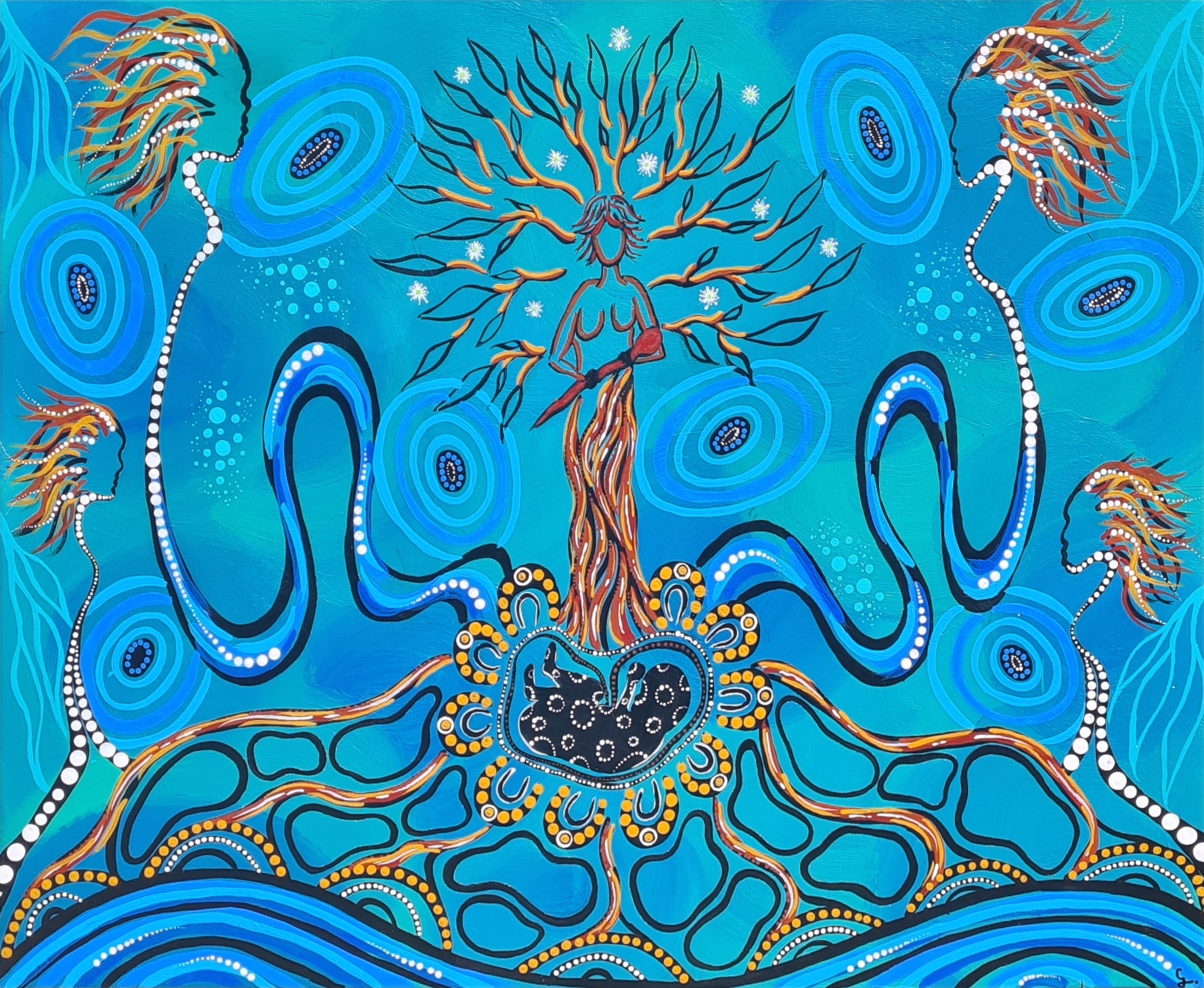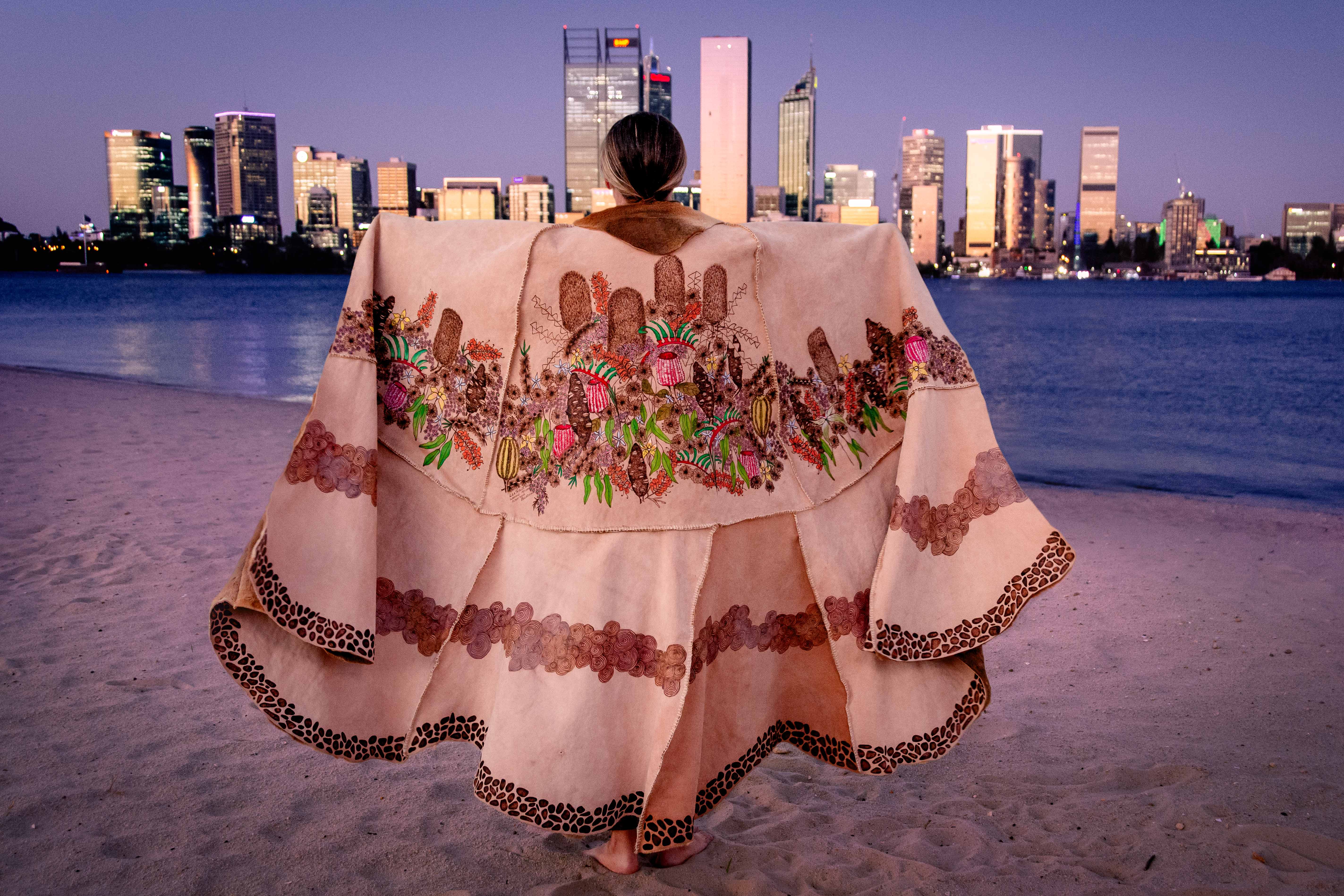The Significance of Whadjuk Women
The Yagan Square Public Art program celebrates the work of four Whadjuk and Noongar artists, selected through a public EOI process as part of the precinct’s redevelopment in 2024. These artworks featured on hoardings throughout Yagan Street Mall, as well as the Digital Tower.
Centred on ‘The Significance of Whadjuk Women’, the program honours Yagan Square’s significance as a historic gathering place, where Whadjuk women played a vital role in cultural education and community life.
Watch the following video to hear from Karen Jacobs, a Traditional Owner of Whadjuk Country, as she shares the cultural significance of the program and the unique opportunity it provided for Whadjuk women artists.
Yagan Square Public Art Program: Overview with Karen Jacobs
'The Significance of Whadjuk Women' by Linda Loo

Artist profile
LINDA LOO: Noongar artist from Whadjuk, Balladong Country.
Artwork description
Fanny Balbuk (Yooreel) played a significant role in Beerloo, Whadjuk Boodja. Yooreel impacted our ancestors to our Whadjuk women leaders of today. The turquoise U shape symbolise Fanny and our Whadjuk women gatherings. The five people figures represent our ancestors who provided guidance and knowledge, connection to the sun, our giver of life, the rebirth of the land.
The Derbarl Yerrigan provides an abundance of food, Matagerup, a birthing place of warrior Yooreel and a place for our new family beginnings.
Yooreel walked between Matagerup and Wellington Street train station, a place of collecting food before being drained. This lake is now connected to Yagan Square.
'Fanny Balbuk' by Gertrina Hayden

Artist profile
GERTRINA HAYDEN: Badimia Yamatji, Whadjuk Noongar Contemporary Aboriginal Artist.
Artwork description
The figure has a strong spirit and is full of fight. She is fierce. She is Fanny Balbuk. Leaves branch off her representing culture and knowledge she has passed on.
Roots run down and are connected to the Derbarl Yerrigan.
Yagan Square is a place of significance for women shown with a child still in the womb.
The Swan River connects to the child showing Water is needed for growth and it is an essential part of our lives.
Small circles show both freshwater and saltwater lakes. Strong spirited women, fire flowing through their hair reflecting germination, growth, resilience and healing. Gathering to discuss issues affecting them and their families and to pass on knowledge they have gained from the matriarchs who came before them.
'Mother Maali' by Iesha Wyatt

Artist profile
IESHA WYATT: Yued Noongar contemporary Aboriginal Artist specialising in painting and digital mediums.
Artwork description
This artwork tells a story while also acting as a map. The mother swan being the Swan River, whilst the cygnet‘s wing represents Heirisson Island.
The work depicts the pregnant women who began their journey to Kaarta Koomba (Kings Park) to give birth. Upon arriving at the sandbar, they found it destroyed to allow ships to pass. The closest crossing was further up at Matagarup (Heirisson Island), a men's crossing where they had to ask permission. This unexpected detour meant that many women couldn't reach Kaarta Koomba in time and were forced to give birth along the way.
Kabali Booka (Bwooka, Bookah) by Lea Taylor

Artist profile
LEA TAYLOR: Wadandi, Menang, Goreng, Kaniyang, Ballardong
Artwork description
Kabali Booka, a cloak made by the hands of women from kangaroo skins. She tends to the animal with respect, knowing that it was a sister to someone, their totem.
This was women’s business. One of the many roles we hold in community, in a time before the tall ships came and stayed, in a time when our lore was the only lore of this land. A land we have been part of since the beginning of time, nyitting, the cold times.
The Booka, a cloak made from kangaroo skins, etched with bone and coloured with ochre. Worn for warmth and comfort by all.
Kabali Nidja Yorgah (Grandmother, This Woman)
When you look at her, what do you see?
The lines on her face, she wears with grace
For she has earned them all.
Her body was home to children now grown
And then she watched them leave.
She’s cared for others, she’s cooked, she’s cleaned
She’s loved unconditionally.
She’s had it tough and never complained
She’s laughed with joy and cried in pain.
She is home, she is beauty, she is grace.
She is a queen.
When you look at her face
What do you see?
A woman with a story,
That Kabali Yorgah could be me.
About the program
Artist selection process:
Stage One (EOI): Artists submitted applications stating their qualifications and preferred artwork zones (1-4). A shortlist was created from these submissions
Stage Two (End of 2023): Shortlisted artists will receive support to develop proposals for their chosen zones.
Installation: Artwork installations will occur zone-by-zone starting in April 2024.
